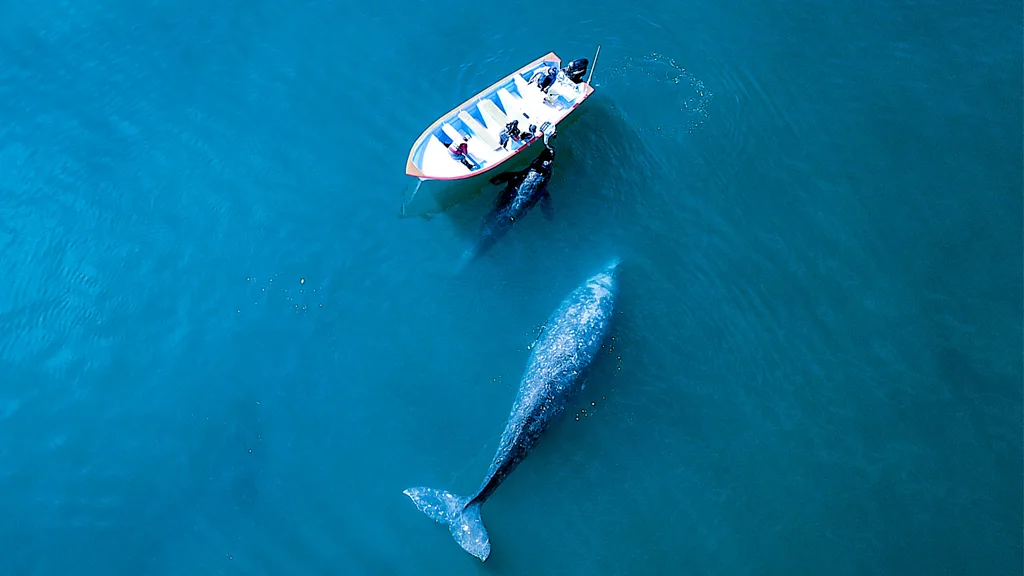
The Only Place Where Whales Come to Watch You
Imagine yourself on a small boat, gently swaying on the waves of the open ocean. The sun is shining brightly, reflecting off the water, and you can hear the distant calls of seabirds. Suddenly, the water beside you stirs, and a massive, majestic whale surfaces just a few feet away. This is not your ordinary whale-watching excursion; this is an experience where it feels like the whales have come to watch you.
Whales and Humans: A Unique Interaction
Whale watching has become a popular activity for ocean enthusiasts, nature lovers, and adventure seekers. However, there are few places in the world where the interaction between humans and whales feels as personal and profound as in certain parts of the globe. These unique spots offer an extraordinary opportunity for a close encounter with these gentle giants, creating memories that will last a lifetime.
The Magic of Baja California
One of the most renowned locations for such intimate whale encounters is Baja California, Mexico. Every year, from December to April, gray whales migrate to the warm lagoons of Baja California to breed and give birth. These lagoons, including San Ignacio Lagoon, Magdalena Bay, and Ojo de Liebre Lagoon, provide a safe haven for mother whales and their calves.
Unlike many other whale-watching destinations, the whales in Baja California seem particularly curious about human visitors. They often approach boats, sometimes even allowing people to touch them. This behavior has earned them the nickname "friendly whales." The experience is surreal, as if the whales themselves are just as intrigued by us as we are by them.
The Humpback Whales of Tonga
Another exceptional place where whales come to watch you is the Kingdom of Tonga in the South Pacific. From July to October, humpback whales migrate to the warm waters of Tonga to mate and give birth. The crystal-clear waters of Tonga provide an ideal setting for swimming and snorkeling with these magnificent creatures.
The humpback whales in Tonga are known for their acrobatic displays, including breaching, tail-slapping, and singing. What makes this experience even more remarkable is the opportunity to be in the water with them. Respecting strict guidelines to ensure the safety and well-being of both humans and whales, licensed operators allow small groups to snorkel near the whales. The feeling of being in the water, eye-to-eye with a humpback whale, is truly awe-inspiring.
Why Do Whales Approach Boats?
The behavior of whales approaching boats and humans can be attributed to several factors. One theory is that whales are naturally curious creatures. Their intelligence and social nature drive them to investigate and interact with their environment, including boats and people.
In locations like Baja California, where whale-watching has been conducted responsibly for decades, the whales have become accustomed to the presence of boats. Generations of whales have learned that these boats pose no threat, leading to more relaxed and inquisitive interactions.
Responsible Whale Watching
While these encounters are undoubtedly magical, it is essential to emphasize the importance of responsible whale watching. Ensuring the well-being of the whales and their natural habitat should always be a top priority. Here are some guidelines to follow:
- Respect Distance: Maintain a safe and respectful distance from the whales. Allow them to approach you if they choose to do so.
- Use Licensed Operators: Choose tour operators who adhere to strict guidelines and regulations for whale watching.
- Avoid Loud Noises: Keep noise levels to a minimum to avoid disturbing the whales.
- Do Not Touch (Unless Invited): In places like Baja California, whales may initiate contact, but it is crucial never to force interactions.
- Educate Yourself: Learn about the species you are encountering and their behaviors to better appreciate and protect them.
The Profound Impact of Whale Encounters
Interacting with whales in such an intimate way has a profound impact on people. It fosters a deeper appreciation for marine life and the need for conservation efforts. Many individuals who experience these encounters become advocates for protecting our oceans and the incredible creatures that inhabit them.
In conclusion, there are a few places on Earth where the lines between observer and observed blur, creating a unique bond between humans and whales. Whether it's the friendly gray whales of Baja California or the majestic humpbacks of Tonga, these experiences are a testament to the beauty and wonder of our natural world. By practicing responsible whale watching, we can ensure that these encounters continue to inspire and amaze future generations.


0 Comments